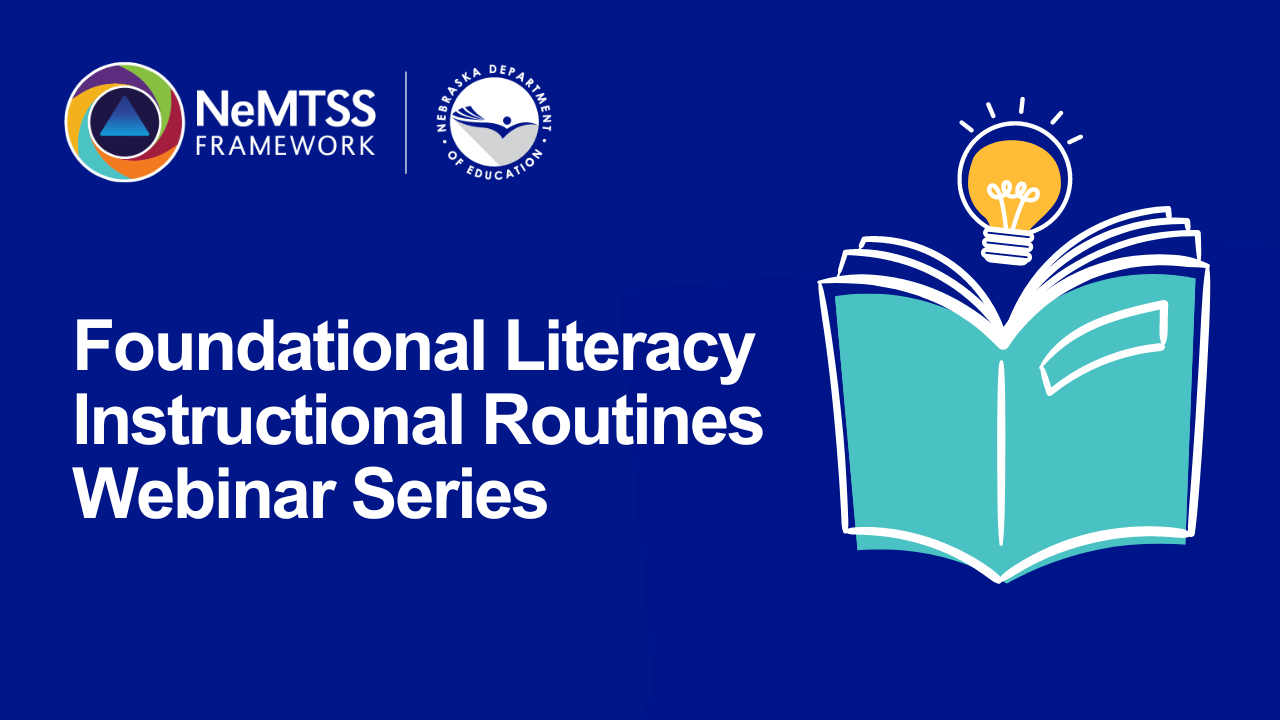Foundational Literacy Instructional Routines
The Nebraska MTSS team, in partnership with the Nebraska Department of Education is excited to announce a new webinar series to guide and support instructional routines for teaching foundational literacy in the classroom. The series, “Foundational Literacy Instructional Routines,” directly aligns with the NeMTSS Framework and consists of two parts: Word Recognition and Language Comprehension.
NeMTSS and NDE team members will share information on important instructional strategies and routines for teaching foundational literacy, along with research-backed information about the brain and how it learns to read.
Webinars in “Foundational Literacy Instructional Routines” will be released on our website in two parts this fall. Each part will consist of a pre-recorded video that is conveniently divided into shorter, 10- and 20-minute segments (also referred to as “chapters”). Educators may watch the full video or skip to the most relevant segments for their needs. Registration is not required to view the pre-recorded videos.
Who are the webinars for?
These webinars are intended for leadership teams and administrators to learn about the Foundational Literacy Instructional Routines document and the importance of using instructional routines. They are also for teachers to watch and see demonstrations of the routines in action.
Webinar series structure and release dates
The webinar series includes:
Part 1: Word Recognition (September 2024)
Part 2: Language Comprehension (October 2024)
What do the webinars cover?
Part 1: Word Recognition
Part one of the series includes nine distinct chapters to address the word recognition component of skilled reading. Viewers will:
- Introduce the Foundational Literacy Instructional Routines document, specifically the word recognition routines and understand the why behind the creation and use of the document.
- Understand the importance of using explicit instructional routines to strengthen foundational literacy skills.
- Identify the instructional implications for each of the routines.
- Explore how to teach and practice foundational literacy skills using evidence-based instructional routines.
- Discuss and apply implementation considerations.
Part 2: Language Comprehension
Part two of the series includes ten chapters with information about the language comprehension component of skilled reading. Viewers will:
- Introduce the Foundational Literacy Routines Document, specifically the comprehension routines and understand the why behind the creation and use of the document.
- Understand the importance of teaching each of the routines for comprehension within grade-level text.
- Identify the instructional implications for each of the routines.
- Explore how to teach comprehension using evidence-based instructional routines using grade-level text.
- Discuss and apply implementation considerations.
Why it matters
Successful literacy instruction is sustained through the use of instructional routines. These webinars can serve as a resource for districts, schools and individual teachers to systematically implement instructional routines.
“Students who fail to decode with automaticity will fail to read with fluency, and students who fail to read with fluency will fail to comprehend the rich complex text needed to succeed in college, work, and life.”
Excerpt from “Why a Structured Phonics Program is Effective” (Liben, 2017)
Next steps
After watching the webinars, we recommend teams review the built-in questions during the webinar and assess how these routines align with current district and grade-level structures
Questions?
For more information, please contact the presenters:
- Olivia Alberts – olivia.alberts@nebraska.gov
- Heidi Farmer – heidi.farmer@esu6.org
- Mary Jo McElhose – mjmcelhose@gmail.com



